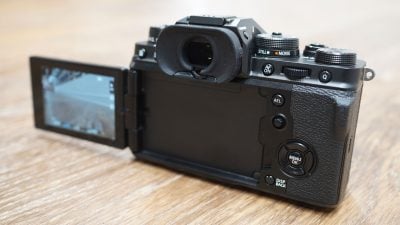Fujifilm XT4 review
-
-
Written by Gordon Laing
Intro
The Fujifilm X-T4 is a high-end mirrorless camera with a 26 Megapixel APSC sensor, 4k up to 60p, 15fps bursts, built-in stabilisation and a fully-articulated touchscreen. Announced in February 2020, it comes roughly a year and a half after the X-T3 and rather than replace that model, the X-T3 will remain on sale at a lower price.
In my in-depth review, I’ve put the X-T4 through its paces, comparing the controls and handling to the X-T3, thoroughly testing the stabilisation for stills and movies, trying out the new Film Simulation and 240fps slow motion video, measuring the extended battery life and shooting action at 15fps! It’s all in my review video below (available 11 May), but if you prefer to read about the X-T4, I’ve included written highlights lower on this page, plus of course a page of sample images and my final verdict.
With long-awaited built-in stabilisation, it would be easy to assume the X-T4 is a merger of the X-T and X-H ranges, but Fujifilm’s keen to point out the X-T4 is very much the evolution of the X-T series and that the X-H series will continue, presumably with larger higher-end models in the future. Since the X-T4 already has such a broad and powerful feature-set, I can only assume the X-H series will aim for physical body upgrades while probably also debuting the latest sensors.
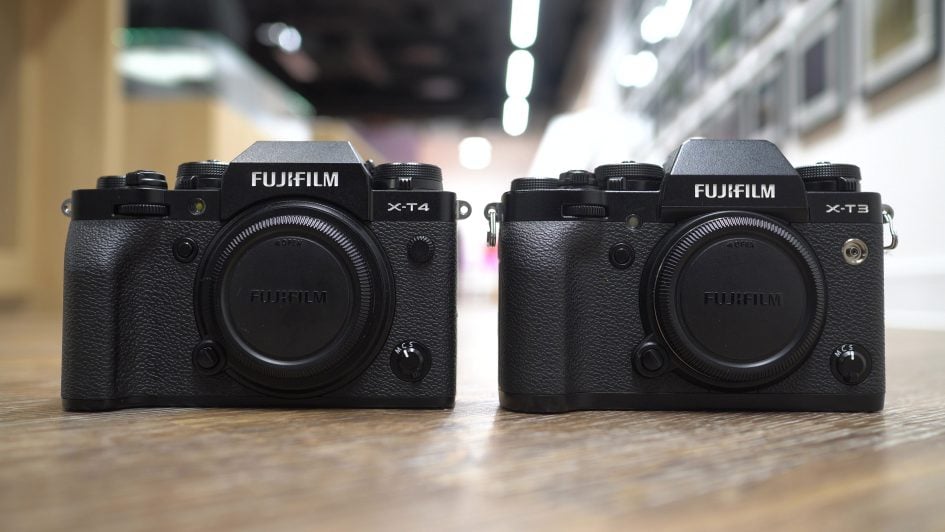
Above: Place the X-T4 alongside the X-T3 and it’s clear to see how the new camera on the left shares the design aesthetic of its predecessor on the right, rather than the X-H1; indeed at first glance, the X-T4 appears to be a slightly thicker version with essentially the same styling and controls.
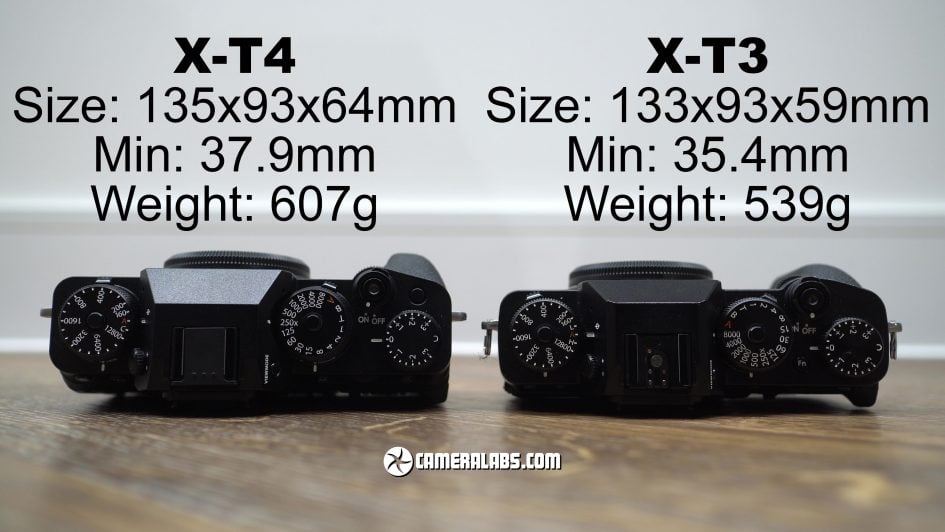
Above: The X-T4 is actually the same height as the X-T3 and only two millimeters wider. The biggest size difference is the thickness with the body working out about 2.5mm thicker at the thinnest point and about 5mm thicker around the grip. In terms of weight, at 607g including battery, it’s 68g heavier than the X-T3. In your hands, it definitely feels a little chunkier and heavier, but crucially not by much, while still retaining the compact charm of its predecessor. Plus the slightly bigger grip allows for a more comfortable hold and suffice it to say the new model remains weather-sealed. The increase in size and weight is mostly down to the addition of built-in stabilisation and a more powerful battery, more about which in a moment, but first let’s look at the control differences.
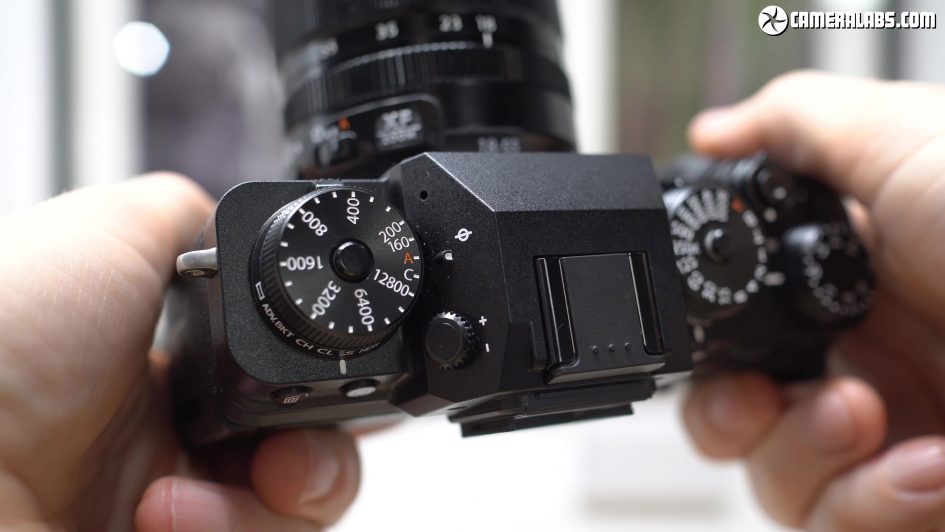
Above: From the top, the X-T4 will look reassuringly familiar to fans of earlier models. On the upper left side you’ll find a lockable dial dedicated to the ISO sensitivity, with a collar around the base for adjusting the drive mode; as before you can access the burst shooting, bracketing and some effects here, but there’s been some rearrangement, most notably with the removal of the movie mode position.
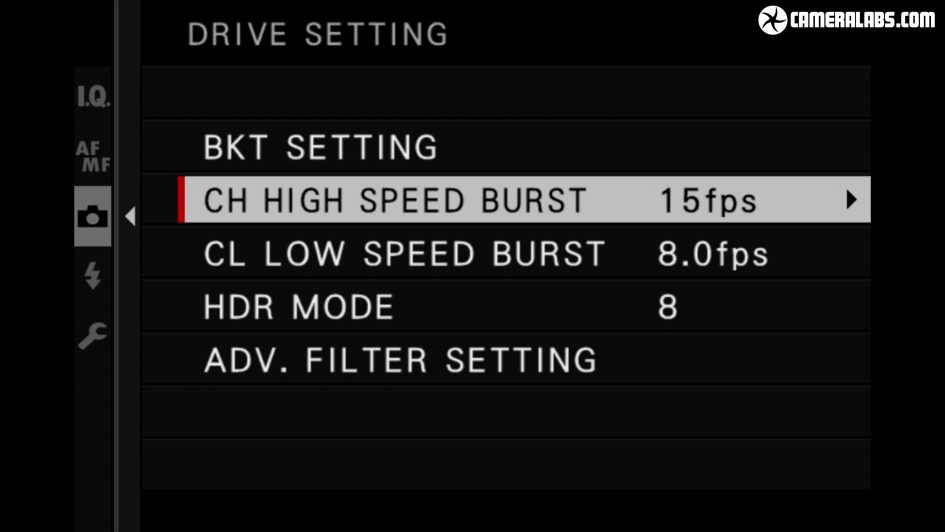
Above: The X-T4 now features a new shutter unit which accelerates the mechanical shutter from 11fps to an impressive 15fps, the fastest of its rivals, while still also offering a multitude of electronic shutter options. The mechanical shutter is quieter than before while also being rated for 300k actuations – double the X-T3.
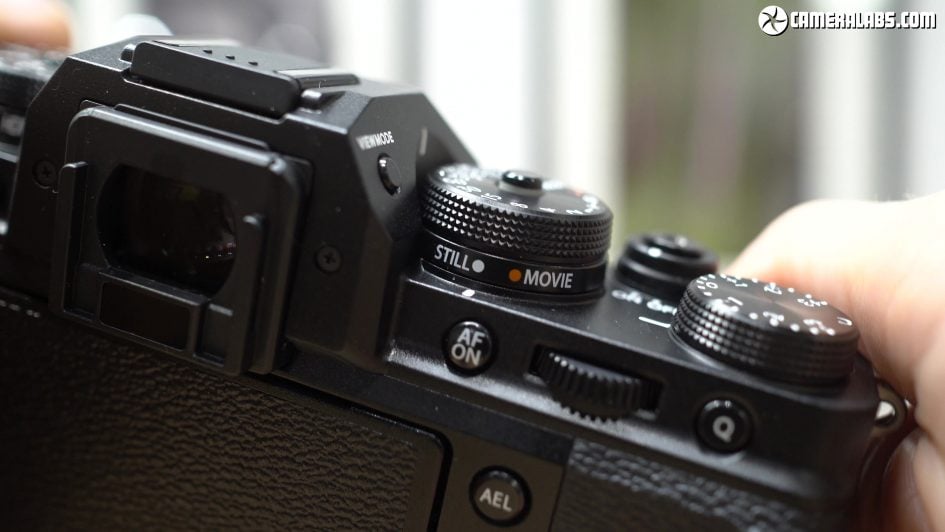
Above: Meanwhile to the right of the head is the lockable shutter speed dial, manually selectable from one second to 1/8000, with the T option for accessing the full range. There’s still a collar around the base but rather than adjust the metering mode, it now simply switches the camera between stills and video, considerately allowing you to maintain different settings in each.
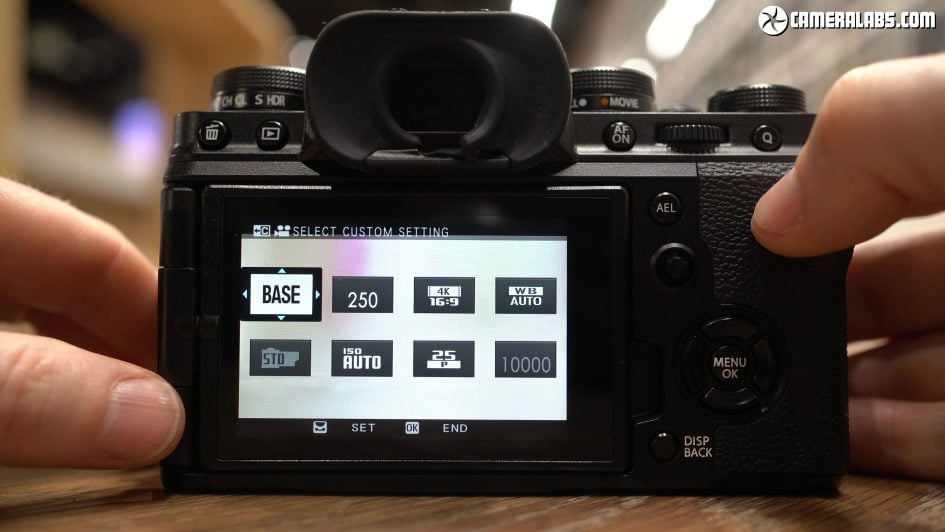
Above: This even extends to the Q-menu which not only remains configurable, but now separately for the stills and movie mode. This makes the camera much easier and more practical when switching between photos and video.
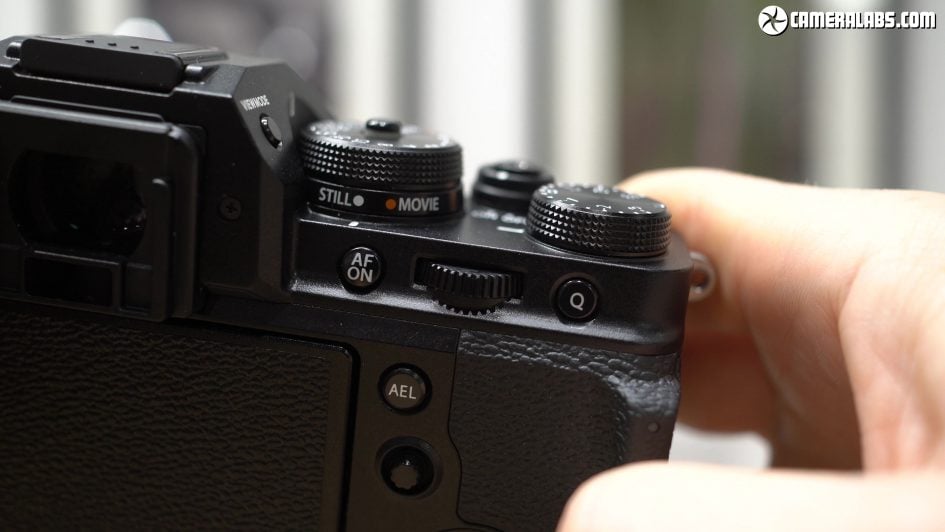
Above: Back to the controls, there’s still a rear thumb wheel and front finger dial, both of which are clickable as well as a shutter button that’s threaded for a mechanical cable release and the dedicated exposure compensation dial that’s still not lockable. Meanwhile round the back you’ll find Fujifilm has retained the cross keys and AF joystick, while relabelling and slightly enlarging the AF-ON button. Interestingly the Q button, now in the top right corner, is so flush that you need to make a very conscious effort to press it, perhaps as a reaction to the X-T30’s Q button which proved easy to accidentally push.
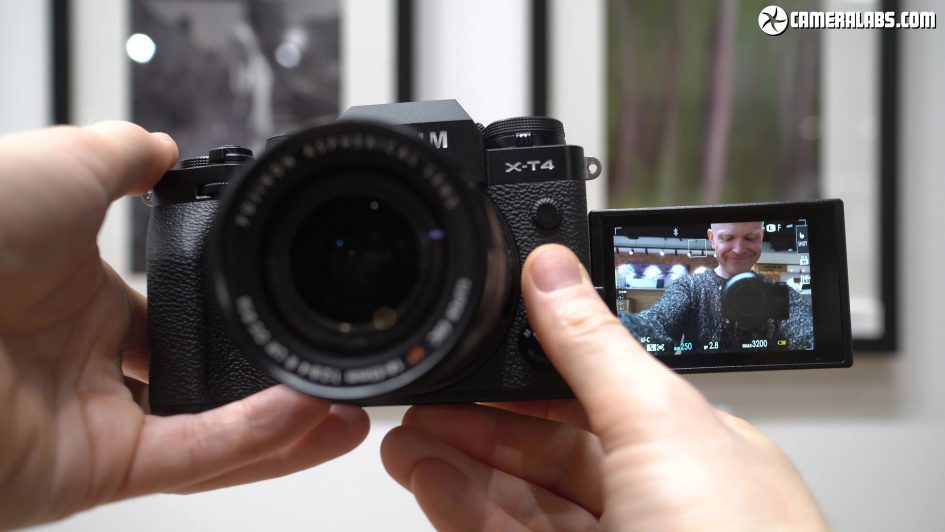
Above: From the rear you’ll notice the first major difference from earlier models: a fully-articulated side-hinged screen. For the first time an X-T camera can now face its screen forward, a move that’ll delight vloggers or anyone who needs to present to camera without a crew to help them. But it’s not just about photographing or filming yourself – a fully-articulated screen also makes it easy to compose at high or low angles whether you’re shooting in the landscape or portrait orientation, and while the previous X-T3’s screen allowed this to some degree, I prefer the complete flexibility here. Of course it’s not to everyone’s tastes, and some will prefer the quicker action of the previous models, but personally speaking I’m delighted by the change, both as a photographer and video creator. Oh before moving on, the screen panel now has 1.62 million dots versus 1.04 of the X-T3.
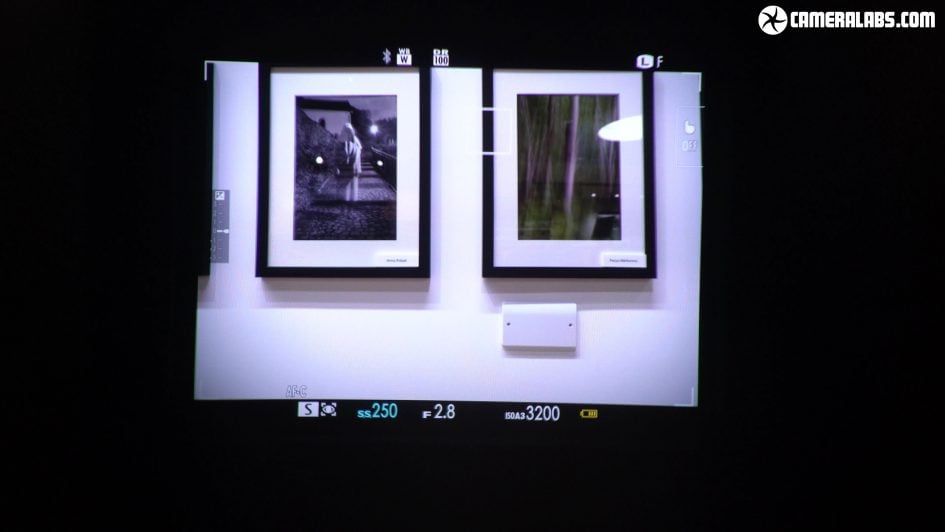
Above: The viewfinder remains essentially the same as before, sharing the same 3.69 million dot OLED panel with 0.75x magnification, although Fujifilm’s added new boost options to improve low light, resolution or frame rate. It would have been nice to have the even more detailed 5 million dot panel of some flagship bodies, but the X-T4’s viewfinder remains respectable. The eyecup’s now more rigid too.
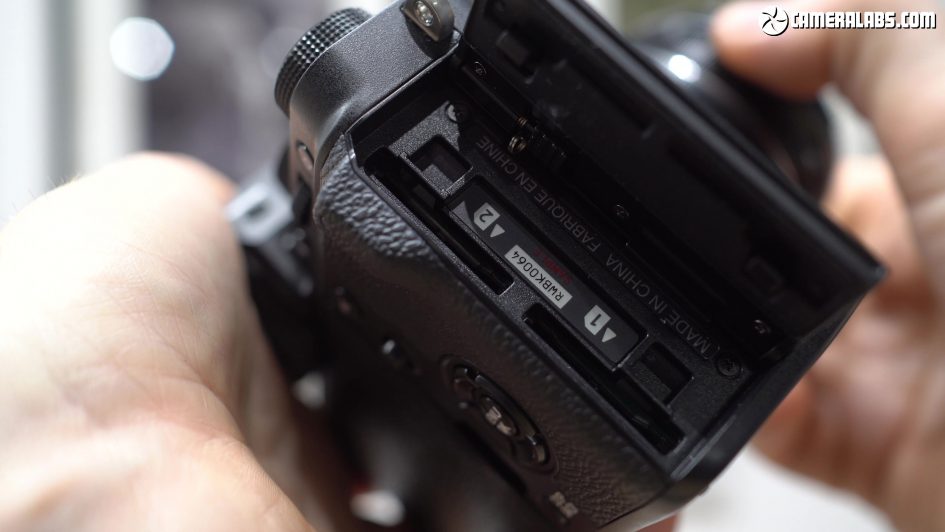
Above: On the grip side there’s still twin SD memory card slots and both exploit the speed of UHS-II cards, and I’ve confirmed in my tests that you can now record backup video to the second card in an identical format – even 4k up to 400Mbit; the card slot door can also now be removed for easier access in a cage. Fujifans may notice the slots are now in a line rather than overlapping, which means the earlier 2.5mm remote port of the X-T3 has had to be moved.
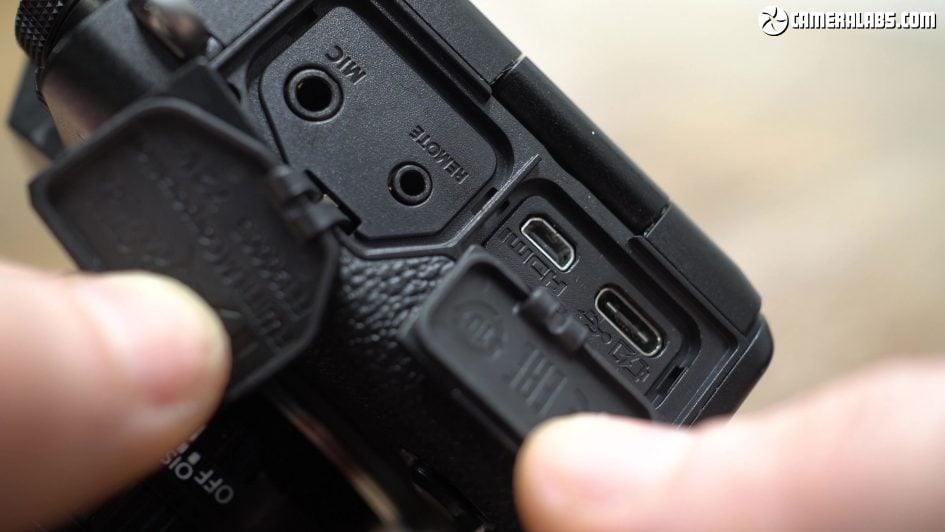
Above: And here it is, now underneath the 3.5mm microphone input on the left side. There’s been some changes here compared to the X-T3, with two flaps rather than a single door. You’ll notice a Type-D Micro HDMI which still offers 10 bit 4:2:2 output, and a USB C port which can be used for charging and power, so long as you use a source with Power Delivery. Fujifans will however notice the 3.5mm headphone jack of the X-T3 is no longer present on this side, but like many recent Fujifilm cameras, the USB C port can double as a headphone jack and the X-T4 is supplied with a suitable adapter cable. Personally I’d have preferred a dedicated jack on the body, especially as I could use it while powering the camera over USB, but at least you can still connect headphones.
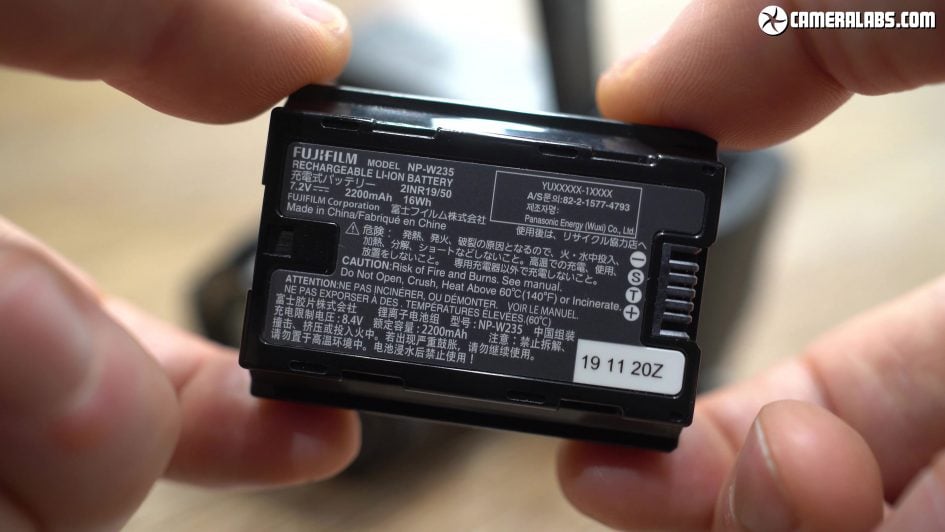
Above: In one of the most welcome albeit overdue upgrades, the X-T4 is now powered by a new battery: the NP-W235 with 2200mAh capacity that’s good for 500 shots under CIPA conditions, versus 390 on the X-T3. Again it’s chargeable inside the camera over USB, although an optional dual battery charger is available. In general use I managed to slightly exceed the quoted life, with around 550 shots, all with the mechanical shutter and IBIS enabled, along with a few minutes of stabilised 4k video too. In terms of video alone, I filmed three half hour clips of 4k 25p with IBIS, with the battery expiring 18:40 into the fourth clip. The X-T4 became very warm after the first clip, but only became a little hotter as the test proceeded, and at no point over-heated or became uncomfortable to hold. In total, almost 109 minutes of 4k 25p video on a single charge versus 62mins of 4k / 25p in my tests with the X-T3 – that’s not far-off double the recording time, and remember the X-T4 also had IBIS running.
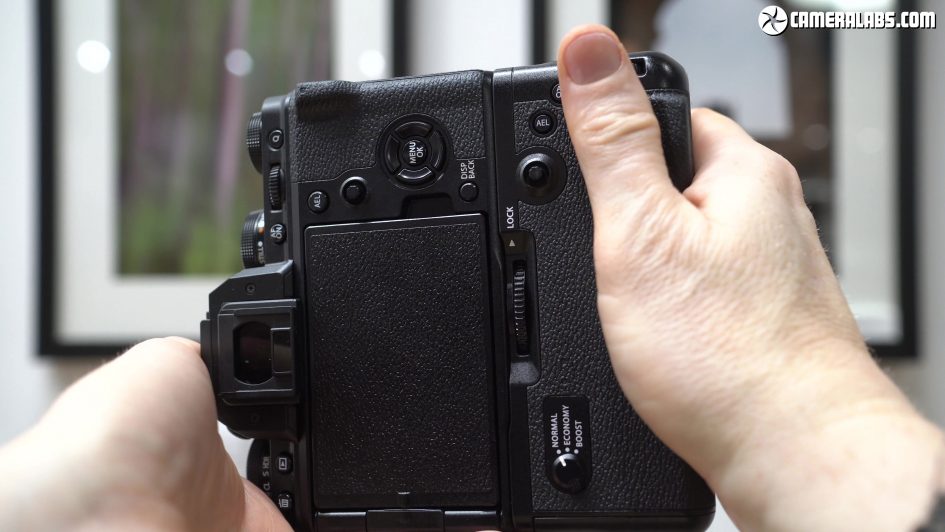
Above: If you desire more power, there’s the optional VG-XT4 grip which houses two extra batteries, tripling the overall life to almost 1500 shots. In a welcome update over the earlier grip, you can now charge all three batteries internally over a single USB connection, and if you have a higher power charger like a MacBook Pro model, the charging time can be shortened. The grip of course provides portrait controls and also has a dedicated headphone jack.
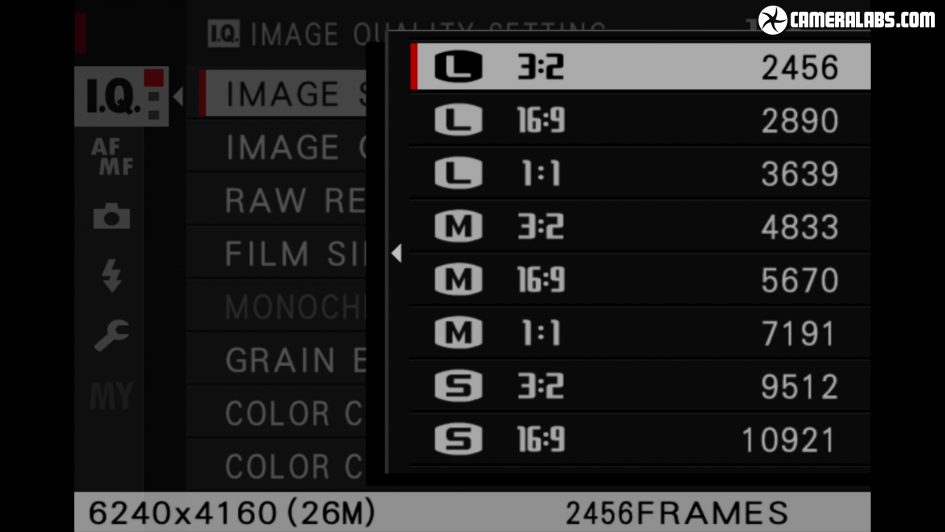
Above: Inside, the X-T4 employs the same 26 Megapixel X-Trans IV sensor and image processor that made their debut on the X-T3 a year and a half earlier. Given the sensor has since been used on the X-T30, X-Pro3 and X100V, you’ll know what to expect from photo quality, and the X-T4 inherits all the latest processing options including grain effects, colour chrome, film simulations and monochrome adjustments.
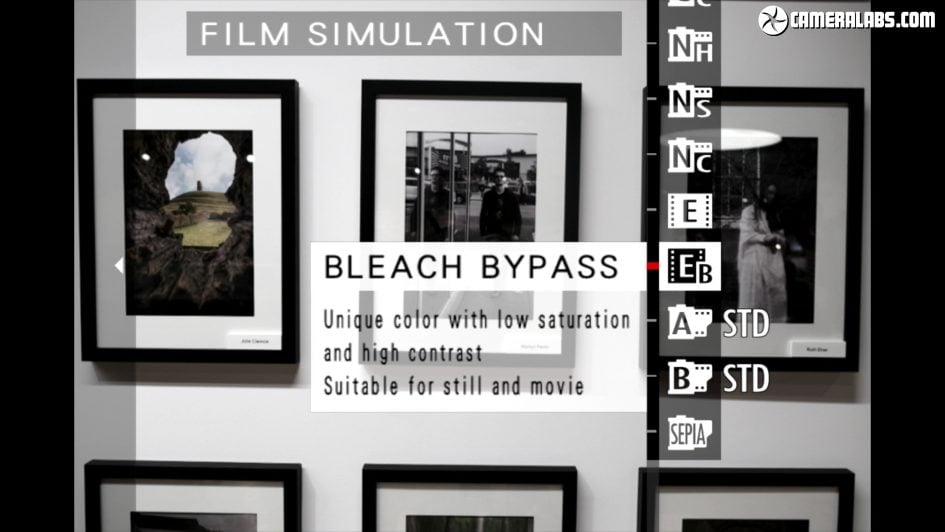
Above: I’m pleased to report the X-T4 inherits the Classic Negative simulation intro’d on the X-Pro3 and as tradition dictates, debuts a new option: Eterna Bleach Bypass, which is ideal for stylised video and I’ll show you an example later. Just one quick note: while I adore the monochrome adjustments, I’m still waiting for the user interface to support touch control or even diagonal movements with the joystick.
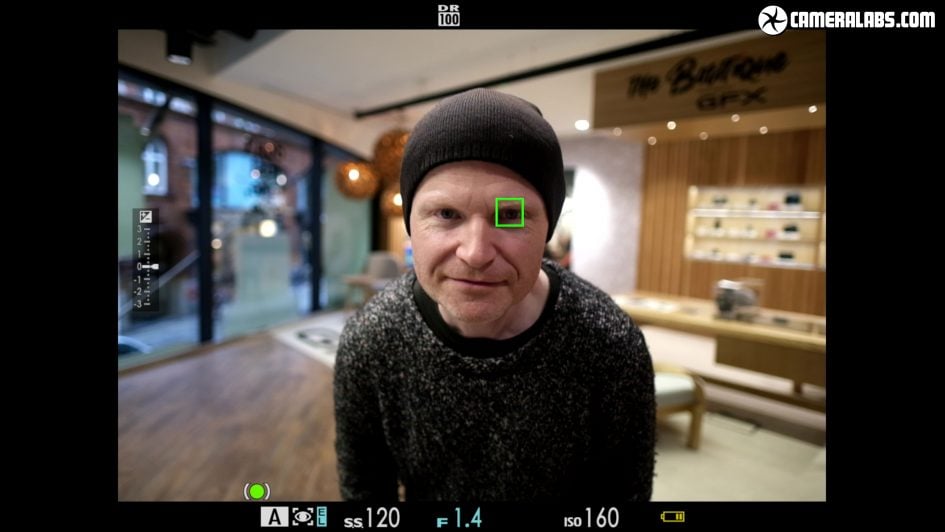
Above: The same sensor means the same broad array of phase-detect autofocus points across the sensor, but Fujifilm has tweaked the focus algorithms, claiming improved face and eye detection, better tracking and faster focusing too. When set to continuous autofocus it did a good job at finding me as I moved around the frame and ducked in and out – maybe not quite as sticky as the latest Sony’s, but certainly now amongst the best out there. Sadly the face and eye detection won’t go as far as recognising animals, but the tracking mode can work fairly well with more distant subjects in motion.
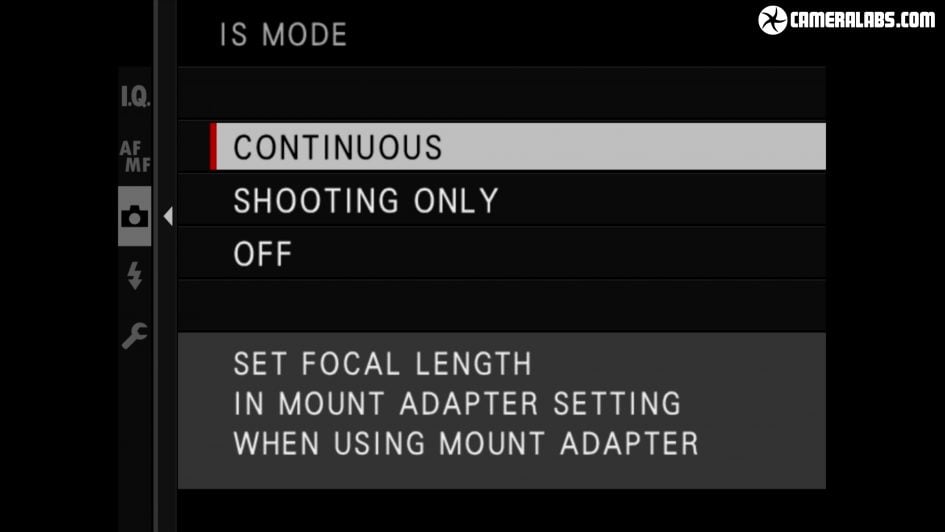
Above: The biggest news though is the X-T4 becomes the first in the series to sport built-in stabilisation, and is in fact only the second X body to offer it after the X-H1.
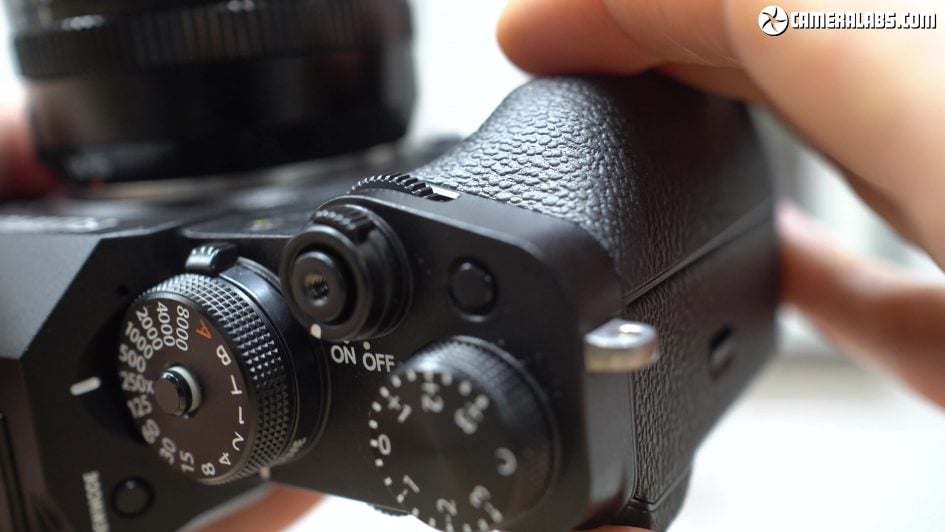
Above: The challenge was to implement IBIS without compromising the compact body of the X-T series. Fujifilm’s certainly shrunk the stabilising unit which thanks to use of magnets over coiled springs is now 30% smaller and 20% lighter than the unit in the X-H1. Coupled with the more powerful battery, it’s inevitably thickened the X-T4 over the X-T3, but not so much it compromises the overall appeal. See my video review at the top of the page for lots of IBIS tests and comparisons.
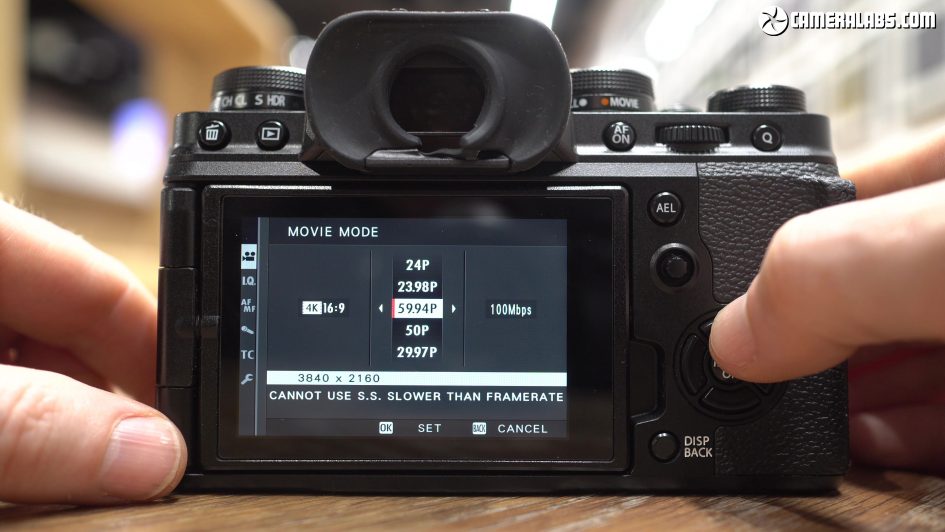
Above: With the same sensor as the X-T3, it’s also not surprising to find similar movie capabilities, but these were already impressive, supporting uncropped 4k up to 30p, or up to 60p with a 1.18x crop. There’s also 10 bit internal recording at 4:2:0 or externally over HDMI at 4:2:2.
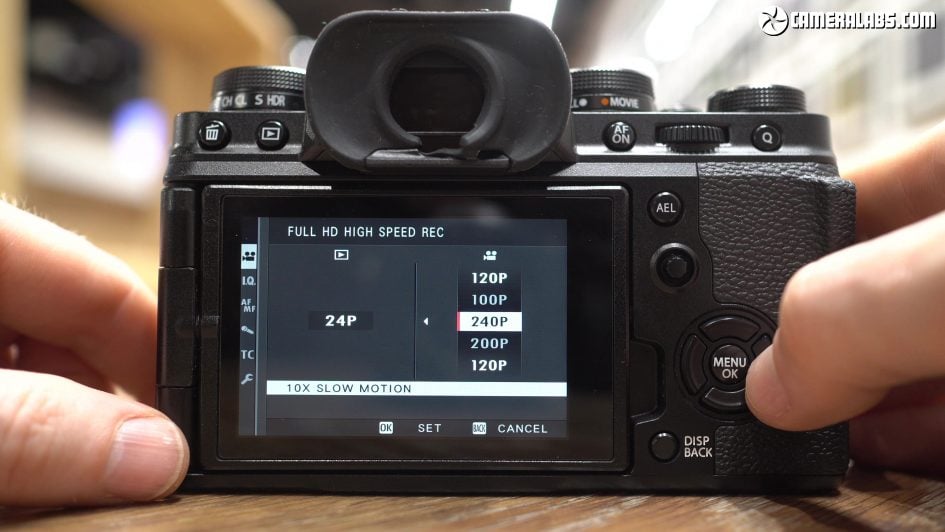
Above: New to the X-T4 is a higher frame rate 1080 mode, operating up to 240fps for a ten times slow-down on 24p output. In my review video above, you can see many examples I filmed at 200p for use on my 25p timeline for an eight-times slowdown. High speed 1080 incurs a 1.29x field reduction.
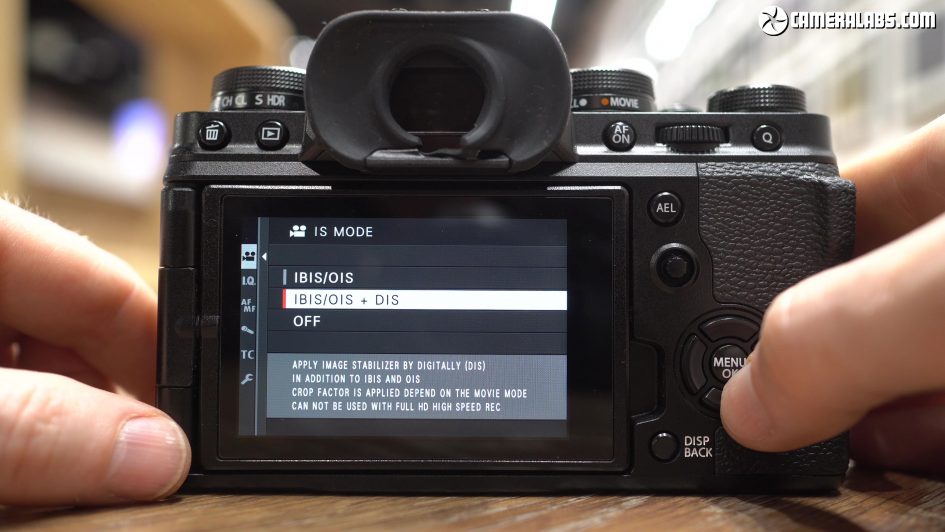
Above: Built-in stabilisation greatly enhances the movie capabilities of the X-T4, and Fujifilm offers a selection of additional electronic options for various situations. Electronic stabilisation incurs a crop of 1.1x for 1080 up to 60p or 4k up to 30p, or of 1.29x for 4k at 60p. If you’re fed up with all the different crop factors, a new option enforces a 1.29x crop for all video, so you don’t need to reframe when switching between them. There’s also a new View Assist mode when shooting in F-log, and a new Eterna Bleach Bypass Film Simulation. Again I have lots of examples in my video review at the top of the page.
Check prices on the Fujifilm X-T4 at Amazon, B&H, Adorama, or Wex. Alternatively get yourself a copy of my In Camera book or treat me to a coffee! Thanks!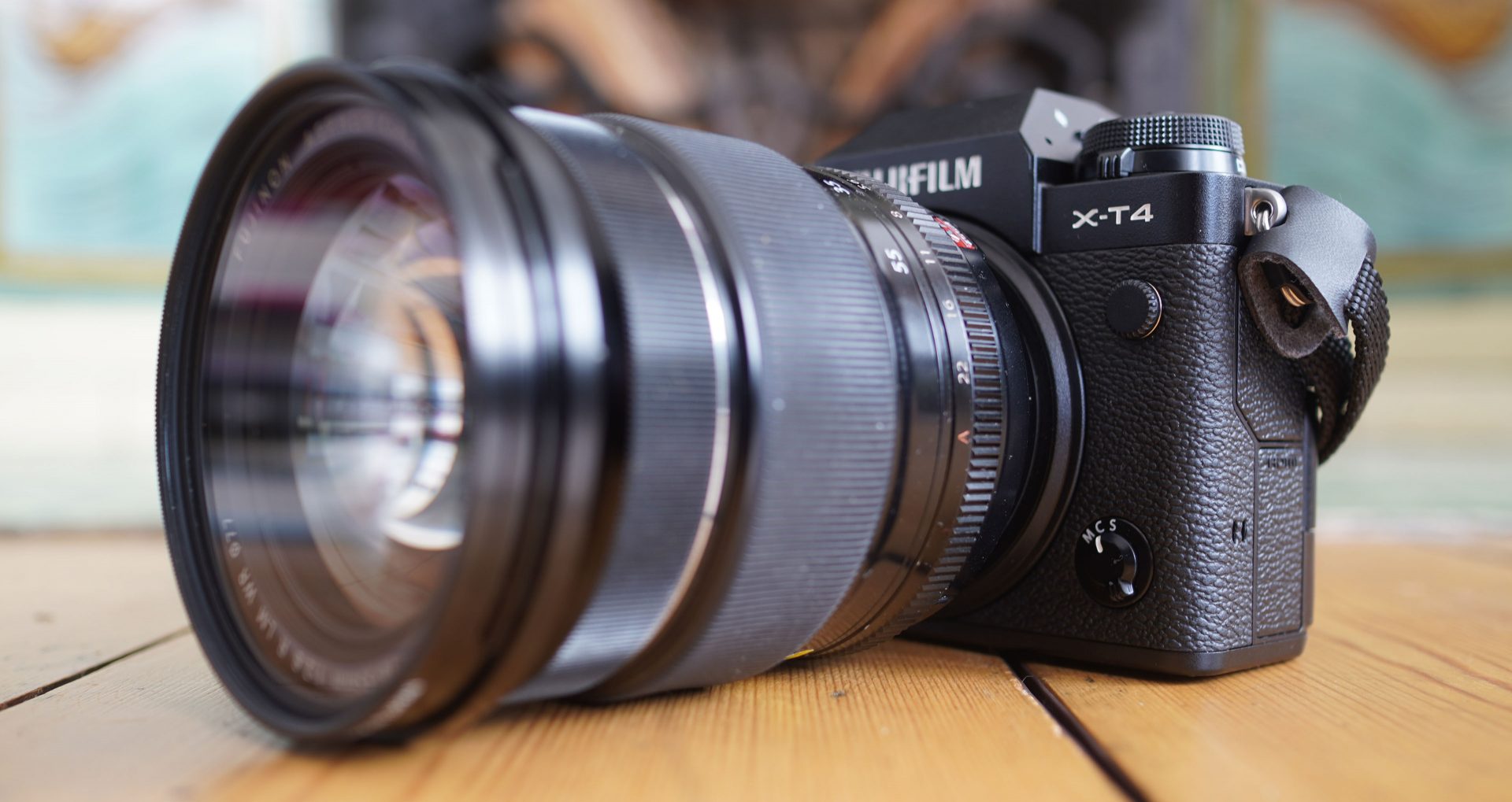
 The X-T4 builds-upon one of my favourite all-round cameras, inheriting the style and quality of the X-T3, while addressing my key complaints. Fujifilm’s squeezed effective built-in stabilisation, a more powerful battery and a fully-articulated screen into the X-T4 while only making the body a little thicker, and also thrown-in faster burst shooting at 15fps, better slow motion video at 1080 240p, and a new Film Simulation for the moody videographers out there. As such it seems almost churlish to find faults, and what little you could complain about is pretty minor. It’s a little annoying to lose a dedicated headphone jack, but you can adapt the USB port and a cable is provided. The viewfinder resolution hasn’t been improved, but 3.69 million dots is still a decent spec. The sensor isn’t new, but then it’s not that old either, capturing good-looking 26 Megapixel photos and 4k up to 60p when many rivals stop at 30p. The new 240p slow motion video is softer than 120p, but few offer anything this fast and there’s still 4k 60p for high-quality half-speed video. Probably the biggest complaints will be addressed to the side-hinged screen by Fujifans who prefer the older mechanism, but this is purely personal and I like the new approach much better. At this price point, there’s also a bunch of high-end cropped-sensor rivals that are all cheaper, albeit lacking the complete feature-set, plus some overlap with budget to mid-range full-framers to consider. Personally speaking I remain very fond of Fujifilm’s approach and wouldn’t trade a bigger sensor for the overall feature-set of the X-T4 at this price point. Ultimately I think Fujifilm’s done a great job at enhancing a popular model without compromising its charm, and the X-T4 becomes arguably the best cropped sensor camera to date.
The X-T4 builds-upon one of my favourite all-round cameras, inheriting the style and quality of the X-T3, while addressing my key complaints. Fujifilm’s squeezed effective built-in stabilisation, a more powerful battery and a fully-articulated screen into the X-T4 while only making the body a little thicker, and also thrown-in faster burst shooting at 15fps, better slow motion video at 1080 240p, and a new Film Simulation for the moody videographers out there. As such it seems almost churlish to find faults, and what little you could complain about is pretty minor. It’s a little annoying to lose a dedicated headphone jack, but you can adapt the USB port and a cable is provided. The viewfinder resolution hasn’t been improved, but 3.69 million dots is still a decent spec. The sensor isn’t new, but then it’s not that old either, capturing good-looking 26 Megapixel photos and 4k up to 60p when many rivals stop at 30p. The new 240p slow motion video is softer than 120p, but few offer anything this fast and there’s still 4k 60p for high-quality half-speed video. Probably the biggest complaints will be addressed to the side-hinged screen by Fujifans who prefer the older mechanism, but this is purely personal and I like the new approach much better. At this price point, there’s also a bunch of high-end cropped-sensor rivals that are all cheaper, albeit lacking the complete feature-set, plus some overlap with budget to mid-range full-framers to consider. Personally speaking I remain very fond of Fujifilm’s approach and wouldn’t trade a bigger sensor for the overall feature-set of the X-T4 at this price point. Ultimately I think Fujifilm’s done a great job at enhancing a popular model without compromising its charm, and the X-T4 becomes arguably the best cropped sensor camera to date.



